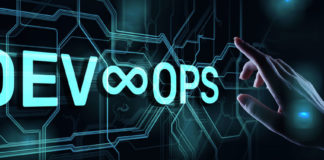The practice or concept of Continuous delivery and its prescribed methodologies has been for many years. In 2011 Jez Humble and David Farley published a book titled Continuous Delivery, where they specified best practices for continuous delivery. A lot has changed since 2011, and continuous delivery methods need an upgrade. The latest release of Automic® Continuous Delivery Director is designed to provide the next advancement of efficiency within continuous delivery practices.
Points of Resistance
In the stock trading world, there is an analytical term known as resistance. Resistance is a price level that a rising stock cannot overcome. Once a stock price reaches this resistance level, it typically stalls and reverses. This resistance pressure, with its accompanied atrophy, is what happens to many continuous delivery and DevOps practice attempts. Continuous delivery practices must overcome resistance pressures if the methods are to be sustainable across the enterprise.
I already mentioned the book Continuous Delivery as one source of definition for continuous delivery best practices, methods, and definitions. There are other books and blogs written on how to create continuous delivery and DevOps practices, so I won’t cover that topic in this blog. What I will be covering is an unspoken resistance pressure to achieving efficient continuous delivery – time.
Continuous Testing
One of the unspoken tenants of continuous delivery is continuous testing. Continuous testing is more than just test automation. Continuous testing is about making formal testing practices and test automation agile – moving it away from waterfall to agile to keep up with agile development practices. Embedding test automation in continuous delivery pipelines is a must, but doing so does not address time being a bottleneck delivery constraint.
Merely running a battering of automated tests at every code change in a continuous delivery pipeline will extend the timeline of your pipeline. Tests, even automated ones, take time to run, and most organizations have a large set of automated tests they want to run against their deployable code. Waterfall test automation isn’t an efficient component of agile release pipelines. What is needed is intelligent and contextual test automation.
Pipeline Intelligence
Automic Continuous Delivery Director uses machine learning algorithms to prioritize and execute only the most relevant test suites. Running only relevant tests addresses the time constraint test automation places on frequent agile releases. Automic Continuous Delivery Director uses four heuristics to prioritize test execution.
Tests that correlate to code that changed.
Flaky tests.
New or updated tests.
Tests manually marked as mandatory.
By running relevant tests, Automic Continuous Delivery Director allows organizations to deliver high-quality releases at high velocity and frequency. Automic Continuous Delivery Director maps code to test suites, so it knows what tests need to run against which code changes.
Failing fast is a critical part of DevOps, and flaky, new, or updated tests can create an unnecessary timeline lag in your release pipelines. Automic Continuous Delivery Director prioritizes these kinds of tests to run first, so if they fail, developers and QA staff are told as soon as possible.
No algorithm can completely replace human judgment. As a result, Automic Continuous Delivery Director allows authorized users to mark tests as mandatory. Mandatory tests will run no matter what the algorithm decides. Additionally, Automic Continuous Delivery Director provides explanative insights into why it chose the tests it did. This feature is designed to provide users with confidence in the decisions that Automic Continuous Delivery Director automatically made.
Conclusion
Continuous delivery has been around for many years, and it is time to use advanced software analytics to deliver the software we produce. Automic Continuous Delivery Director will intelligently adapt your continuous delivery pipelines toward to most efficient path.
If you want to learn more you can visit our booths at the Gartner IT Symposium/Xpo™ or the DevOps Enterprise Summit. The schedule along with our booth numbers is below.
Gartner IT Symposium/Xpo™, Oct. 20 – 24, Orlando, booth number 809
Gartner IT Symposium/Xpo™, Oct. 28 – 31, São Paulo, booth number 313
DevOps Enterprise Summit, Oct. 28 – 30, Las Vegas, booth number 902
Gartner IT Symposium/Xpo™, Nov. 3 – 7, Barcelona, booth number 511
Lastly, we offer a free tier for Automic Continuous Delivery Director where you can use the product for up to 10 active releases. You can signup at, https://cddirector.io/.









